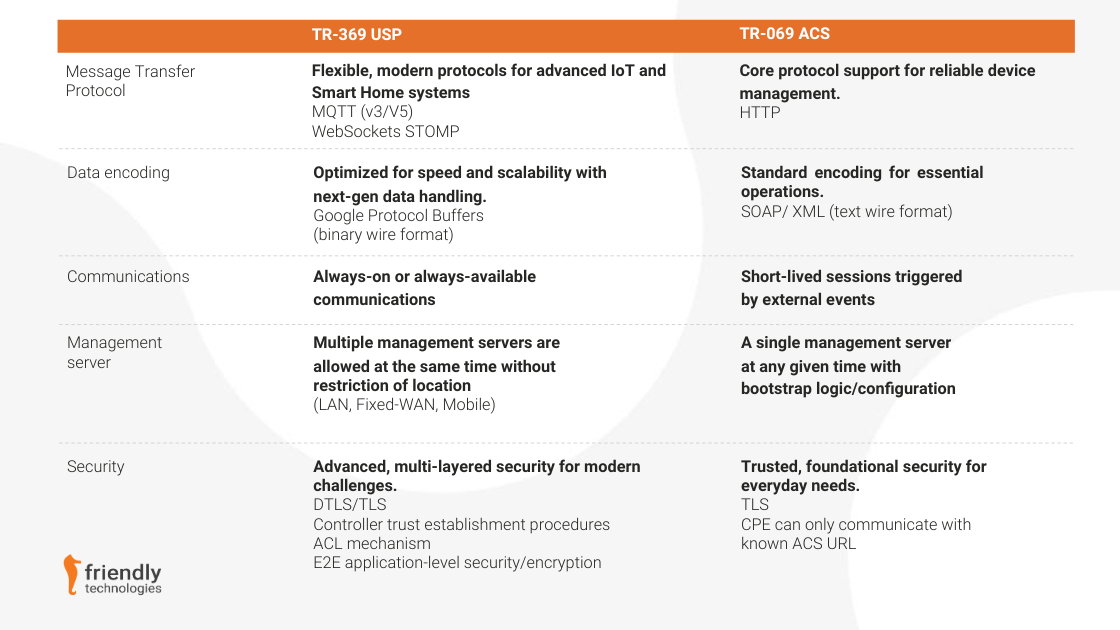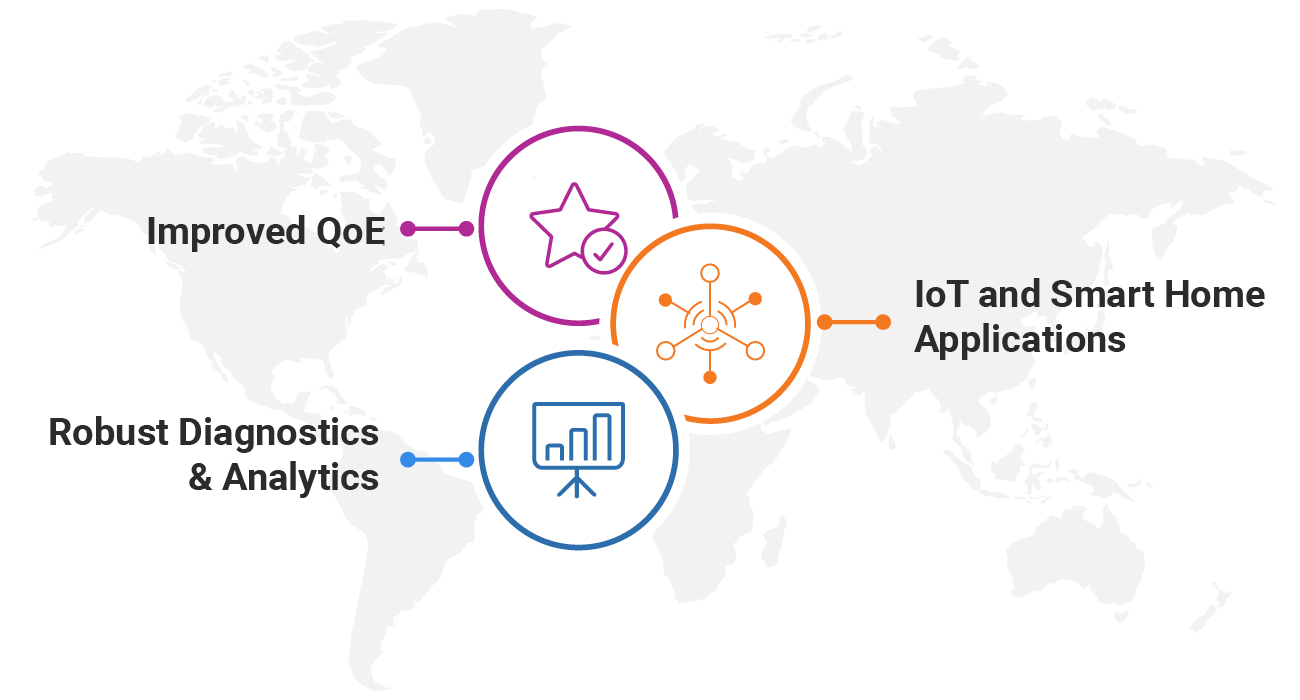Standalone or together with FT TR-069 ACS. Only protocol that’s going to be updated by BBF moving forward. Why to add USP to ACS
TR-369, also known as the User Services Platform (USP), is the evolution of TR-069 CWMP. It enables advanced connected device management – offering enhanced flexibility, security, and real-time data control across broadband and IoT networks.
Why TR-369 is The Smart Choice for Service Providers
- Reduce Device Strain: Lower the load on devices while managing them more effectively.
- Automated, Continuous Monitoring: Get real-time insights without manual intervention.
- Enhanced Security: Built-in advanced security protects networks and data end-to-end.
- Data Collection, Simplified: Gather and analyze more data with ease and accuracy.
- Effortless Efficiency: Leverage your existing expertise with enhanced speed and streamlined processes, maximizing performance without added complexity.
Key Features of Friendly Technologies’ TR-369 USP Solution
- Multi-Controller Capabilities: TR-369 USP supports multiple controllers, allowing simultaneous management from various control points (e.g., ACS, back-office systems, mobile apps).
- Modular and Flexible Device Management:
- Management of Containers and Applications: Install, monitor, and update apps or software containers remotely.
- Comprehensive QoE Tools: Enables real-time quality monitoring and analytics for proactive customer experience improvements.
- Seamless Integration with IoT Protocols: TR-369 supports diverse IoT and Smart Home protocols (e.g., ZigBee, Z-Wave, MQTT), expanding compatibility across connected devices.

Key Advantages of Switching to TR-369 USP
- Bulk Data Collection vs. Limited Monitoring: TR-369’s support for continuous data collection without straining the ACS. TR-369 allows scalable data collection across large networks, making it possible to analyze and act on real-time device data.
- Advanced Security Layers: Unlike TR-069, TR-369 uses application-layer security, ensuring secure device management across all network levels.
- Proactive Maintenance: With the ability to manage software containers and firmware remotely, TR-369 minimizes downtime and security risks through automated updates and maintenance.
- Enhanced QoE and Wi-Fi Optimization: Friendly’s TR-369 supports Wi-Fi diagnostics, channel management, and interference mitigation for better end-user experiences.
- Greater Management Control: TR-369 manages each service individually, as opposed to device-based management in TR-069.
Core Use Cases and Applications of TR-369 USP

Why Choose Friendly Technologies for Your TR-369 Solution?
Proven Industry Leader
With decades of device management expertise, Friendly Technologies provides carrier-class, scalable, and user-friendly solutions.
Customer-Centric Service
From 24/7 technical support to tailored deployment options (cloud or on-premises), Friendly supports seamless TR-369 transitions.
Future-Proof Flexibility
Friendly’s platform is built to support evolving IoT and Device Management needs, ensuring long-term investment value and industry alignment.
Friendly’s TR-369 solution empowers service providers with the flexibility and simplicity to deploy value-added services, driving higher average revenue per user while effectively and affordably minimizing churn.

Friendly IoT Device Management
One-IoT™ Device Management
IoT Application Enablement
Friendly Smart Home
Embedded Clients
Friendly LwM2M client
Friendly OMA-DM Client
Friendly Partners
Commercial Partners
Device Manufacturers
Resources
Blog & News
Glossary
Webinars
About Friendly Technologies